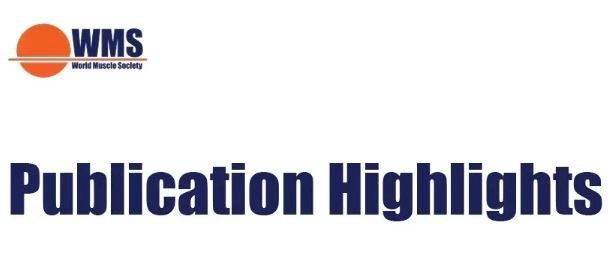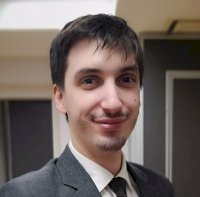
By Nizar Y. Saad PhD
Publication
Nature communication Volume 14, Article number: 80 (2023)
Efficient skeletal muscle regeneration is dependent on adipose stromal cells originating from subcutaneous adipose tissue
Sastourné-Arrey, Q., Mathieu, M., Contreras, X. et al.
https://www.nature.com/articles/s41467-022-35524-7
Efficient skeletal muscle regeneration is dependent on adipose stromal cells originating from subcutaneous adipose tissue
Skeletal muscle is one of the few tissues in adult mammals that has the capacity to regenerate. When muscle tissue is damaged, muscle regeneration is being activated. This process is critical for maintaining muscle function and repairing damaged or injured muscles. This complex process involves the activation of a specialised population of stem cells, called satellite cells.
These cells are located on the surface of muscle fibers and are responsible for generating new muscle cells/fibers to replace those that have been damaged or lost. These cells differentiate into myoblasts, which then fuse together to form new muscle fibers. In addition to satellite cells, other cells in the muscle tissue, such as fibroblasts and immune cells, also play important roles in muscle regeneration. These cells help to clear away debris and promote the growth of new blood vessels to supply the regenerating muscle with nutrients and oxygen.
In addition, Fibro-Adipogenic Progenitor (FAP) cells, found within the muscle itself, play a crucial role in generating a favorable niche allowing satellite cells to induce muscle regeneration. Previous evidence showed the accumulation of a heterogenous population of FAP in injured muscle undergoing regeneration. However, the origin of this heterogeneity was, until now, poorly understood.
In this manuscript, Sastourné-Arrey et al. elegantly demonstrate the involvement of adipose tissue in the regeneration of injured skeletal muscles through the Adipose Stromal Cells (ASCs) that were found to contribute to the heterogeneity of FAP cells. First, the authors showed that the transcriptome profile of FAPs from injured muscle resembles that of ASCs.
In addition, they investigated, using in vitro and in vivo methods, the reason behind the decrease of subcutaneous adipose tissue (ScAT) ASCs and the increase in muscle FAPs following muscle injury. They showed that muscle injury or exercise triggers ASC chemotaxis in humans and mice by measuring cultured ASC migration towards serum collected from mice that have undergone muscle injury and humans who have exercised.
To validate ASC infiltration into injured muscle, the authors developed an inventive in vivo model by grafting ScATs from a transgenic mouse expressing a GFP fusion of the CD34 ASC surface marker into a non-GFP recipient mouse and showed infiltration of ASC GFP-positive cells into injured muscle.
Next, the upregulation of podoplanin expression at the cell surface of ASCs from injured animals led them to investigate the involvement of platelets in ASC muscle infiltration. They showed in vitro and in vivo that ASC and platelet interaction is necessary for the recruitment of ASCs to the injured muscle.
The authors validated the dependence of muscle regeneration on ASC muscle infiltration by measuring a reduction in expression of late myogenic markers, and in proportion of histological regeneration markers in injured muscle of mice with depleted platelets, which were rescued following intramuscular injection of ASCs.
Finally, they showed that ScAT is the muscle injury-responsive reservoir of ASCs and that PeriGonadal Adipose Tissue (PGAT) did not compensate for the removal of ScAT in mice with injured muscle.
In conclusion, the authors identified an unsuspected role of ScAT in skeletal muscle regeneration and brought a new understanding to the crosstalk between adipose (AT) tissue and skeletal muscle in which AT is an endogenous reservoir of regenerative cells implicated in the efficient regeneration of skeletal muscle.
More experiments will be done to see if this dialogue is affected under pathological conditions such as muscular dystrophy or during ageing, and whether its enhancement or exploitation could treat muscle-related disorders and reverse muscle aging.

Quentin Sastourné-Arrey and Maxime Mathieu are the co-first authors of the highlighted study. Quentin received his PhD from the University of Toulouse (France) in 2019, for his research with Dr. Coralie Sengenès examining the role of fibro-adipogenic progenitors during skeletal muscle regeneration, and how adipose tissue-resident stromal cells (ASCs) contribute to the regeneration process by migrating and infiltrating the muscle in response to injury. He then joined Dr Jeffrey Dilworth and his team as a postdoctoral research fellow at the Ottawa Hospital Research Institute (Ontario, Canada) to work on epigenetics modifications in muscle stem cells as they relate to aging in humans.
Maxime took over Quentin’s work with a special focus on the mechanisms regulating the infiltration of ASCs in the injured muscle, with approaches perturbing their migration or by removing their reservoir. He is also studying the fate of infiltrated ASCs during muscle regeneration and asks whether their adipocyte differentiation could benefit the muscle stem cells' biology, trying to unravel an unsuspected protective role for this cell type in muscle. After earning his PhD, Maxime would like to pursue his research in the field of muscle physiology and/or cellular biology as a postdoctoral researcher.
Nizar Y. Saad, PhD, is an assistant professor at The Ohio State University College of Medicine, and a principal investigator at the Center for Gene Therapy at the Abigail Wexner Research Institute at Nationwide Children’s Hospital. Dr. Saad is an experienced RNA biologist and gene therapy specialist. Dr. Saad’s growing international reputation is demonstrated by his service on the New Investigator Committee, the Musculo-Skeletal Gene & Cell Therapy Committee and the Oligonucleotide and RNAi Therapeutics Committee of the American Society of Gene and Cell Therapy (ASGCT). Dr. Saad’s research interests are in understanding the pathobiology of inherited neuromuscular disorders, and in the discovery of circulating exosome-based biomarkers and the development of viral (Adeno-Associated Virus) and non-viral (Exosomes) based gene therapies towards these disorders (i.e., FSHD, DMD, BMD and EDMD) and other rare genetic diseases (e.g., Progeria and other Laminopathies).
This article is presented by the
Publication Highlights Committee.
Published on 9 March 2023.